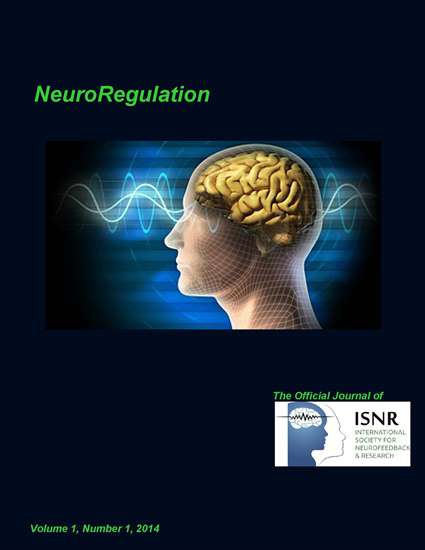Toward Development of Sham Protocols for High-Definition Transcranial Direct Current Stimulation (HD-tDCS)
DOI:
https://doi.org/10.15540/nr.1.1.62Keywords:
HD-tDCS, sham, sensation, tDCSAbstract
High-definition transcranial direct current stimulation (HD-tDCS) is a noninvasive cortical stimulation (NICS) technique that, due to the utilization of multi-electrode stimulation, may enable development of sham conditions characterized by indistinguishable scalp sensations compared to active conditions, with little or no cortical influence. We sought to contribute to the development of an optimal sham electrode configuration for HD-tDCS protocols by gathering ratings of overall sensation reported by participants during different electrode configurations and current intensities. Twenty healthy participants completed a magnitude estimation task during which they rated their “overall sensation” in 1-minute intervals during five 5-minute stimulation conditions. A 5 x 5 (Time x Stimulation condition) analysis of variance (ANOVA) was conducted to determine if sensation measurements differed over time, and how this varied by condition. Null hypothesis significance tests and equivalence tests were conducted to determine which sham conditions were statistically indistinguishable from the experimental condition. The ANOVA revealed main effects for Time and Stimulation condition. Planned comparisons, comparing each sham condition to the experimental condition (4x1 ring configuration, 2 mA), revealed differences in sensation ratings for all but one condition (Sham 1x1A); no sham conditions were found to be statistically equivalent to the experimental condition. Our HD-tDCS findings build upon previous NICS reports of differences in sensation ratings between sham versus experimental conditions when traditional “ramping down” approaches were used. Alternative multi-electrode configurations that manipulate electrode placement to shunt current across the scalp warrant further investigation as valid blinding methods.
Downloads
Issue
Section
License
Authors who publish with this journal agree to the following terms:- Authors retain copyright and grant the journal right of first publication with the work simultaneously licensed under a Creative Commons Attribution License (CC-BY) that allows others to share the work with an acknowledgement of the work's authorship and initial publication in this journal.
- Authors are able to enter into separate, additional contractual arrangements for the non-exclusive distribution of the journal's published version of the work (e.g., post it to an institutional repository or publish it in a book), with an acknowledgement of its initial publication in this journal.
- Authors are permitted and encouraged to post their work online (e.g., in institutional repositories or on their website) prior to and during the submission process, as it can lead to productive exchanges, as well as earlier and greater citation of published work (See The Effect of Open Access).











